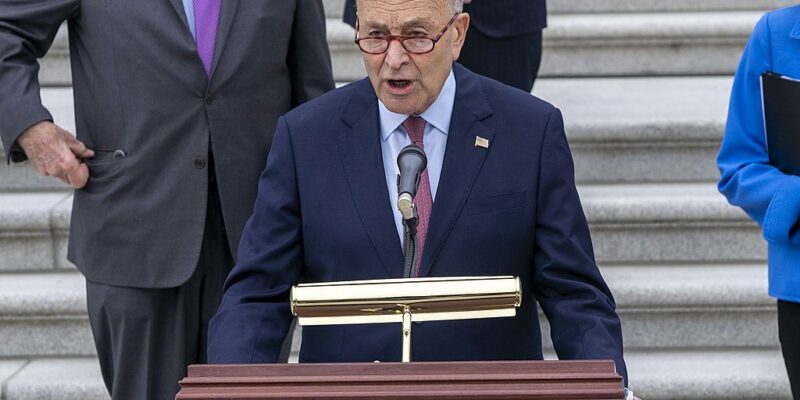
A dramatic realignment is underway in American politics, according to new survey data from the Pew Research Center. Released this week, the findings expose a sharp generational and gender-based divide, with men under 30 now favoring the Republican Party by an astonishing 44-point margin—a seismic shift from just two years ago, when that demographic was evenly split.
The data, drawn from Pew’s National Public Opinion Reference Survey conducted between February and June 2025, reveal that the youngest cohort of male voters has turned decisively rightward. Analysts suggest the shift may be rooted in economic instability following the 2023 recession, which hit young men especially hard. Federal Reserve reports show that unemployment among males under 30 peaked at levels not seen since the Great Recession, fueling skepticism toward the status quo and driving many toward the GOP.
Pew Research is showing some incredible partisan swings from 2023 to 2025.
18-29 Men: 🔴R+44
18-29 Women: 🔴R+14
30-49 Men: 🔴R+15
30-49 Women: 🔵D+3
50-64 Men: 🔴R+3
50-64 Women: 🔴R+1
65+ Men: 🔵D+6
65+ Women: 🔵D+2 pic.twitter.com/YI6T2lpFqx— Christian Heiens 🏛 (@ChristianHeiens) July 30, 2025
Men aged 30 to 49 also lean Republican (+15), while their female counterparts in the same age bracket continue to favor Democrats, albeit narrowly (+3). The divergence suggests that the nation’s political gender gap is widening, potentially exacerbated by contentious debates over gender roles and cultural policy that dominated headlines throughout 2024. A 2025 study in the American Political Science Review found that such issues have had an outsized influence on the political outlook of younger men.
Among older Americans, the landscape remains relatively unchanged. Voters 65 and older lean Democratic—men by 6 points, women by 2—though there are signs of Republican inroads among the 50–64 male demographic, which now registers a slight GOP tilt (+3). The long-dominant Baby Boomer generation appears to be holding its ground even as the political energy shifts among their grandchildren.
One of the more intriguing findings, which spells disaster for Democrats if true, is the 13% of young men (18–29) who refused to identify with either major party—a potential sign of rising political detachment. A 2024 National Election Studies report tracked a 15% increase in voter apathy among this same group since 2020, suggesting that alongside the rightward surge lies a deeper current of disengagement.
The Hill explained that “The good news for Democrats in the latest comprehensive survey of Americans’ partisan identities is that among young voters, the party has regained a lead, a 6-point advantage among those ages 18 to 29.
The bad news: Four years ago, the advantage was 32 points.
These are historically good numbers for the GOP, which had traditionally been the smaller party for generations. The way Republicans won elections nationally was to harness the power of their high-propensity, affluent base in the suburbs to outvote lower-income, working-class Democrats. If they could tip a majority of the true independents, Republicans could win substantial majorities, especially in midterms, despite starting from a smaller base.
But the Trump era has turned a lot of that on its head, as Republicans emerge as the plurality party, but also the one that struggles to get its lower-income, lower-propensity voters to the polls. If you wanted one convincing argument for why Democrats are favored in midterms, this would be it — even more than the midterm curse, which has left the party in power with a record of three wins and 22 losses in the past 100 years’ worth of midterms.
After a century of being the bigger party, but the one with the turnout problem, Democrats find themselves in the other role: the smaller party with the more reliable voters. That’s how Republicans fumbled their chance for a big win in 2022 but still won convincingly in 2024. It’s also why the smart money is on Democrats in 2026. Then it’s back to the bigger, presidential-year electorate in 2028, and advantage Republicans … and so on.”
It might be a good time for Democrats to stop listening to their radical base, one that has been growing in antisemitism and is currently in a full-fledged panic over a commercial for blue jeans.
If the trends hold, the implications are far-reaching. Democrats must contend with the possibility that their once-reliable edge among young voters is eroding, while Republicans face the challenge of transforming cultural momentum into lasting political infrastructure. For now, the Pew numbers are more than just a snapshot—they are a warning flare signaling that America’s political future may look very different from its recent past.
[Read More: Kash Patel Uncovers ‘Hidden Room’ In FBI]











